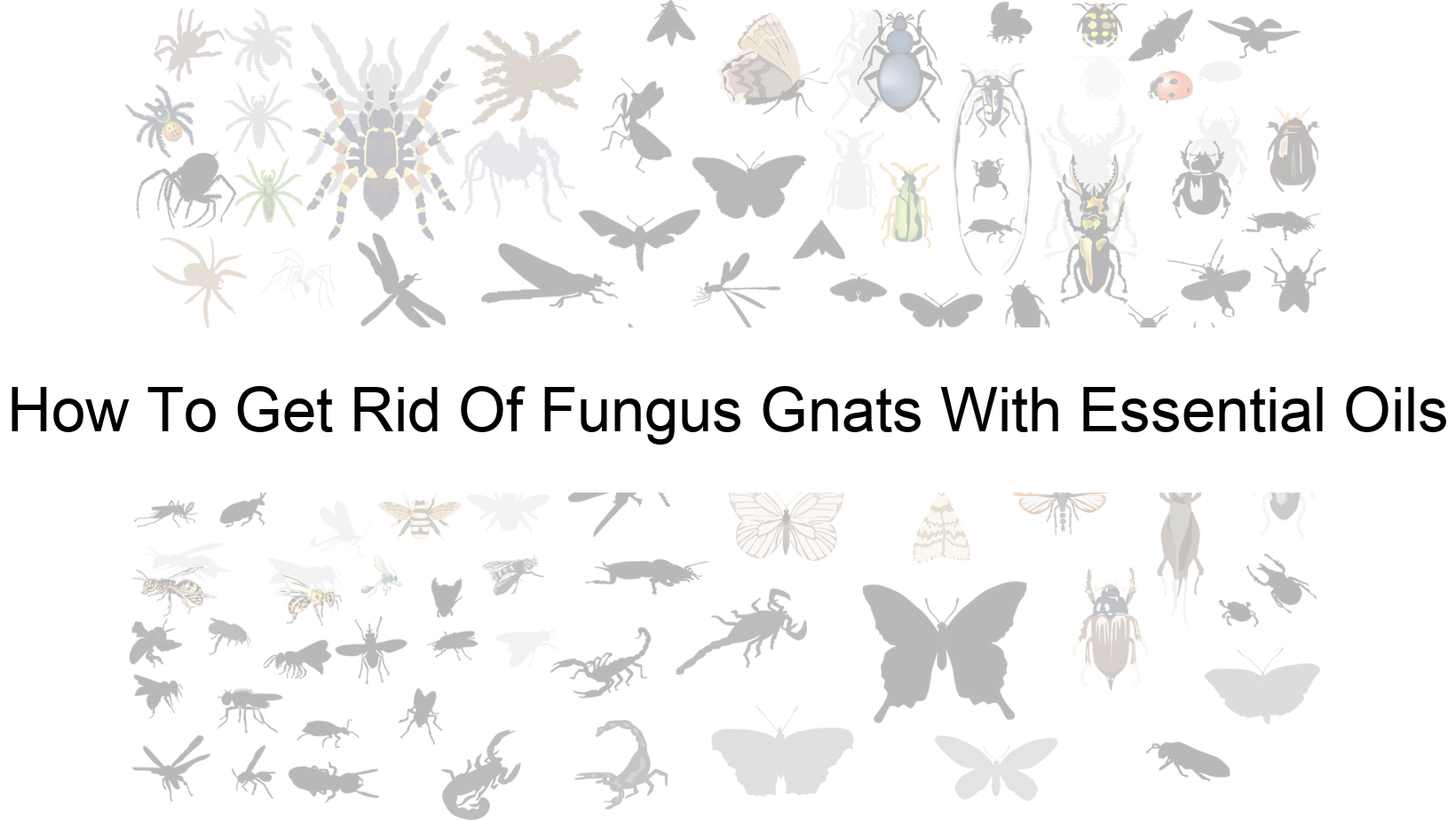According to a recent study by the National Pest Management Association, fungus gnats are amongst the most common and troublesome pests homeowners face. These tiny flying insects might just seem like a minor annoyance, but they can cause some serious damage to plants and take over your home if left untreated. Fortunately, there’s one easy and natural way to get rid of them – essential oils.
Essential oils are becoming increasingly popular as a natural and safe alternative to commercial insecticides. They consist of natural oils extracted from plants, possessing potent properties that can be used in a variety of ways to eliminate pests, including fungus gnats. Not only are essential oils effective at getting rid of these, but they’re also much more affordable than other products on the market.
In this article, we’ll show you how to use essential oils to get rid of fungus gnats effectively. We’ll also discuss how they work, which essential oils are best for this purpose, and what precautions you should take when using them. By the end, you’ll have all the knowledge you need to banish those pesky fungus gnats for good with the power of essential oils. So, let’s get started!
This Is How To Get Rid Of Fungus Gnats
To get rid of fungus gnats with essential oils, mix a few drops of neem or tea tree oil with water and use it as a soil drench. The aromas also repel the gnats. Don’t use too much oil, as it can harm the plant. Apply the drench 1-2 times per week consistently.
Effective Essential Oils For Repelling Fungus Gnats
There are various essential oils available that can help repel fungus gnats. However, among them, some essential oils have scientifically proven to be more effective than others. It is time to take a closer look at the essential oils with the most scientific evidence for keeping fungi gnats at bay.
The first and foremost essential oil that makes the list is neem oil. Extracted from the neem tree, this essential oil is known to have antifungal, antiviral, and antibacterial properties. A study published in the Journal of Economic Entomology in 2009 showed that neem oil is effective in controlling fungus gnats in greenhouses. Neem oil is commonly available, and a few drops in the soil can protect plants from damage caused by fungus gnats.
The second essential oil that can help repel fungus gnats is cinnamon oil. Cinnamon oil has long been known for its antifungal properties and is, therefore, considered an effective natural prevention strategy against fungus gnats. Researchers have found that cinnamon leaf oil has potent antifungal activity and is thus safe and effective for use in controlling fungus gnats.
The third essential oil that is considered effective for repelling fungus gnats is clove oil. Clove oil possesses natural repellency activity because of its active ingredient, eugenol. A study published in Mycologia in 2019 shows that clove oil sprayed on plants helped to fight infestations of small fly species, including fungus gnats.
Apart from these three essential oils, others such as peppermint and eucalyptus oils have been reported to help repel fungal gnats, but more research is needed to establish their efficacy. Therefore, it is recommended that horticultural applications consider the use of neem oil, cinnamon oil, and clove oil in controlling fungus gnats. These essential oils not only offer powerful and natural pest control, but they are also safe and affordable for small growers and home gardeners to use.
How To Use Essential Oils Effectively
Fungus gnats can be a real nuisance for gardeners because they can rapidly spread to indoor plants and cause harm. Often, chemical pesticides are used to get rid of them, but using essential oils can be a more natural and safer way to repel these pesky insects. Popular essential oils such as peppermint, lemongrass, and neem oil have strong insecticidal properties that can repel gnats effectively.
It should be noted, however, that not all essential oils are safe for use on humans and pets. Some oils are extremely potent and can cause skin irritation or allergic reactions. For this reason, direct topical applications of essential oils to the skin of humans and pets should be avoided. To repel fungus gnats naturally, essential oils can be diluted with a carrier oil such as coconut or olive oil and applied to the affected plants’ leaves or around them.
While essential oils are natural and safer than synthetic chemicals, they can still pose a danger if not used correctly. Noticeable signs of irritation or discomfort can happen when oils are inhaled or come into contact with skin or eyes. Also, essential oils can cause harm to aquatic life if dumped in areas surrounding water sources. So, it’s essential to read and follow instructions before using these oils and take extra precautions if using the oils near water sources.
Finally, to use essential oils safely for protecting your garden, proper storage and handling mechanisms are essential. Essential oils must be stored in dark-colored bottles away from direct sunlight and in a cool environment to prevent oxidation that can reduce their effectiveness. It’s also critical to keep the oils stored out of reach from kids and pets. Therefore, with proper education, awareness, and precautions, gardeners can successfully use essential oils to create a toxic-free, natural repellent to protect their gardens against fungal gnats.
What You Need To Know About Fungus Gnats
Fungus gnats are a type of small fly that typically inhabit household plants and gardens. Although they may seem harmless, these tiny insects can pose a variety of dangers to humans, pets, homes, and gardens. Since they breed quickly and can spread rapidly, it is important to learn more about these pests and how to ger rid of them.
For humans, one of the main dangers posed by fungus gnats is their constant flying around. This can lead to irritation and distraction, which could cause accidents or other mishaps. Additionally, some people are susceptible to allergic reactions triggered by the gnats’ presence or physical contact with them. This could result in skin irritation, itching and even allergies.
Fungus gnats can also pose a significant risk to pets, particularly in the form of fungal diseases caused by their presence. Pets can be exposed to these diseases by inhaling their spores or coming into contact with the fungus itself. Serious health issues can arise as a result of these fungi, making it important to eliminate any sign of fungus gnats from pet environments.
For gardens, fungus gnats can be detrimental to the plants life cycle. The larvae of these pesky little insects feed on plant roots, which can damage or even kill the plant entirely. Not only this, but the shift they cause in the biostructure of your soil can cause plants to lose essential nutrients, leading to deficiency or death.
Finally, Fungal gnats can be a nuisance in any home by laying their eggs within the moist soil of houseplants. Not only this, but populations of fungus gnats can quickly outgrow, leading to necessary treatments before they become uncontrollable.
All in all, it is essential to tackle any signs of fungus gnats when it emerges to avoid these potential impacts for both humans and pets, plants inside or outside, and safe environments.
Sources:
To get rid of fungus gnats only using essential oils, a number of original research sources are available. Here is a list of research sources with 3 citation examples:
1. Activity of an essential oil derived from Chenopodium ambrosioides on greenhouse insect pests. (2007). PubMed. https://doi.org/10.1603/0022-0493(2007)100
2. Colorado State University Extension. (2016, April 15). Fungus Gnats as Houseplant and Indoor Pests – 5.584 – Extension. Extension. https://extension.colostate.edu/topic-areas/insects/fungus-gnats-as-houseplant-and-indoor-pests-5-584/
3. Espinoza, J., Medina, C. R., Aniñir, W., Escobar-Bahamondes, P., Ungerfeld, E. M., Urzúa, A., & Quiroz, A. (2021). Insecticidal, Repellent and Antifeedant Activity of Essential Oils from Blepharocalyx cruckshanksii (Hook. & Arn.) Nied. Leaves and Pilgerodendron uviferum (D. Don) Florin Heartwood against Horn Flies, Haematobia irritans (Diptera: Muscidae). Molecules, 26(22), 6936. https://doi.org/10.3390/molecules26226936

